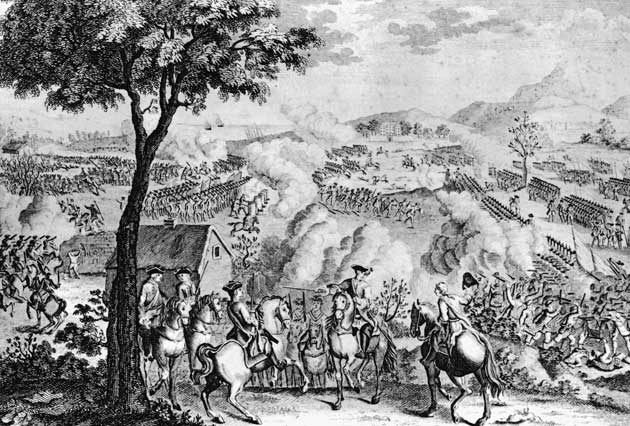Myth of 'primitive' Jacobite army at Culloden laid to rest
Contrary to legend of claymore-wielding savages, Highland forces were well equipped and trained

They are dismissed as primitive savages who charged into battle screaming and waving their claymores, only to be cut down by musket fire from well-drilled British army redcoats.
The defeat of Bonnie Prince Charlie's forces at Culloden, near Inverness, in 1746 is widely considered a triumph of modernity over the romance of a bygone age.
But new research has established this is yet another of the many myths about the rebellion based largely on government propaganda of the day. Gaelic poets also share some blame for the misconception because of their obsession with the sword as a heroic weapon. In reality, the battles between the Jacobites and Hanoverian forces were more contests between equals with the rebels using up-to-date military tactics and relying on the musket and bayonet – not the claymore.
Professor Murray Pittock, who carried out new research for the forthcoming edition of his book The Myth of the Jacobite Clans, said: "It helps to create a story that they were primitive and barbaric to present them as very badly armed. Highland self-representation played along with propaganda and interpretations by later historians which presented this caricature of the so-called 'Highland charge'. It is associated with a simple forward charge using swords, but it was part of a wide range of tactics which are being used by the Jacobites.
"There are far, far more guns than there are swords and the Jacobites thought 'real soldiers used muskets'. There was also a very large number of cannon – about 70-plus cannon were in Jacobite hands in 1745."
A British army suffered a shock defeat at Prestonpans, near Edinburgh, in 1745, partly because its commanders believed their own propaganda that "controlled fire-power" by a modern army would see off what they regarded as a bunch of irregulars.
Then at Falkirk, the redcoats received a taste of their own medicine. "General [Henry] Hawley orders his dragoons to ride at the Jacobites and break the frontline. But he ends up facing not a bedraggled charge, but the McDonalds holding rank and opening fire – this was controlled Jacobite fire bringing down a cavalry charge," said Professor Pittock of Glasgow University. The defeat at Culloden, he says, happened because the Jacobites were outnumbered, did not have their heavy cannons and tried to cross boggy ground. The redcoats' use of cannons firing grapeshot also had a major effect.
Even the National Trust for Scotland's visitor centre at Culloden is not immune from the false depiction of the Jacobites. Professor Pittock said while it had "a lot of good information", the dramatic recreation in its "immersion theatre" film played to public expectations. "Everybody is hairy and screaming and they don't have a gun. Basically, it shows a lot of Highlanders, many in kilts, charging and waving swords against a lot of redcoats with muskets," he said. "It doesn't represent the fact that from Culloden alone 2,320 muskets and 190 swords were picked up from the battlefield; that's more than 10 to one."
The National Trust for Scotland said visitors were told that the Jacobites were not the "unruly rabble described in Whig propaganda", but were "organised under full military discipline". A spokeswoman said the film was not meant to be realistic. "The aim is to give visitors some insight into the sights, sounds and confusion of the battle for soldiers on both sides," she said, "rather than to provide a factual representation of the battle."
The second edition of 'The Myth of the Jacobite Clans' is published in March
Subscribe to Independent Premium to bookmark this article
Want to bookmark your favourite articles and stories to read or reference later? Start your Independent Premium subscription today.

Join our commenting forum
Join thought-provoking conversations, follow other Independent readers and see their replies